Fashion Illustration in Design Process
Category: Design Process 19 August 19
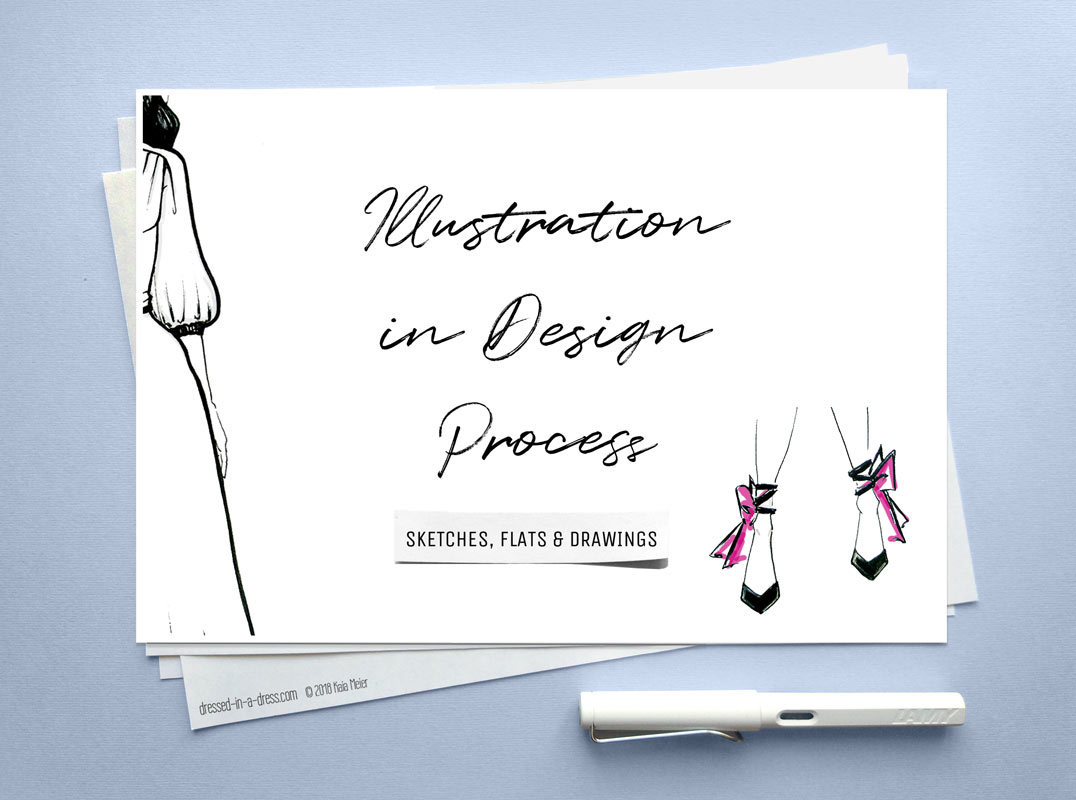
Imagination takes you to distant cities, introduces to people from other continents and dresses you up in clothes that you have never worn before. If building a new city is problematic, and it is sometimes impossible to find strangers from the dream, sewing a dress is easy.
The main thing is to correctly translate the thought from the head to the fabric. I imagine this process as travelling by train from one city to another. But rarely happens that the rails run correctly. Because of this, on the way from point A to point B inexplicable and unexpected things happen, and the final result becomes strikingly different from the imaginary one.
What’s going on? What am I missing?
Imagination tends to embellish reality and flatter its master. Without proper training, eyes distort the proportions, and the hands don’t have a connection with the head. Creating an idea for a dress is not a journey with the only last stop. Between points A and B the train can stop at many more stations. Among them are:
- The First Sketch
- Fashion Illustration
- Technical Flat Drawing
One can do without them, but it’s easier to correct the design, drawn on paper than to fix the shortcomings with scissors on the dummy or a client. Those “stations” are different in their purpose and degree of detail.
The First Sketch or the Rough Draft
A sketch is an image that is drawn in a couple of minutes, it captures the thought and creates the first impression, shows the volume and the construction parts.
Some draw only clothes, others draw a figure in clothes. For this, I use a minimum set of materials: a pencil or pen and paper. Sketching is the preparation for the next drawings, so details and accuracy are not so important here.
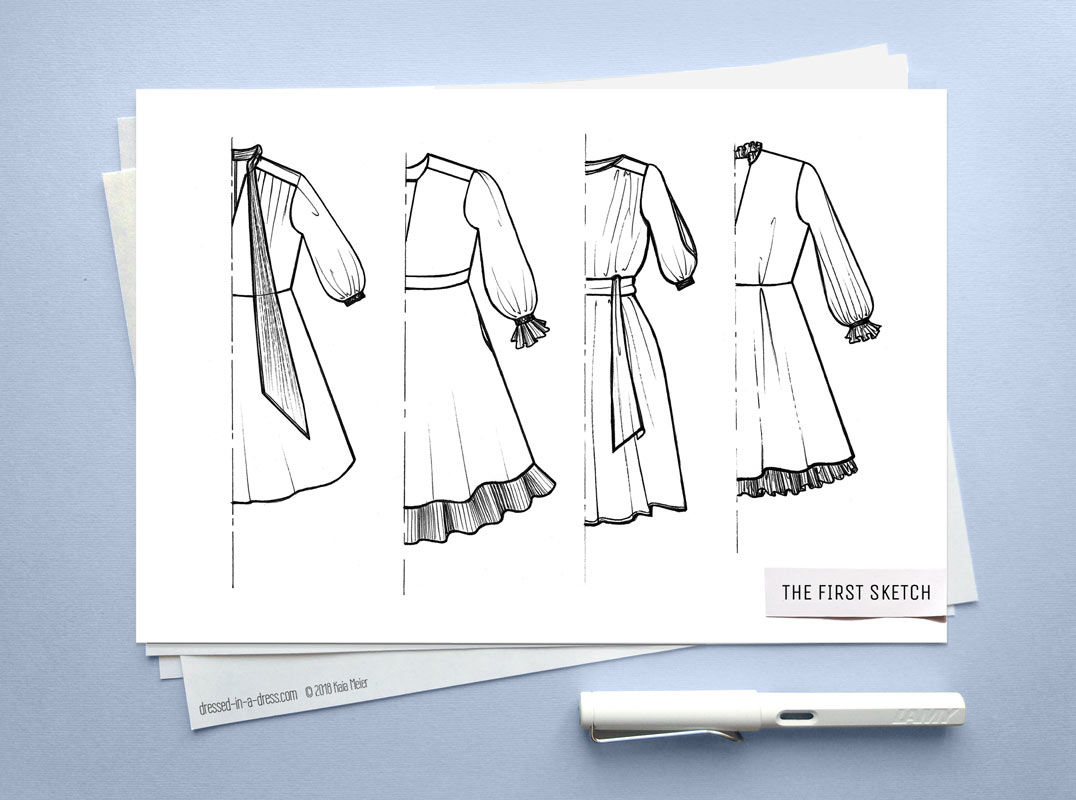
When I come up with an idea, I do not focus on the only one sketch, instead, I do 2-5-10 images. The amount depends on inspiration. If the construction and design are not clear in advance, I draw one dress after another until I see the right one. It is a searching process.
There are advantages In this approach: a number of sketches help to see how the work evolves and analyze it. It’s also easy to get back to the early designs if the thought went the wrong way.
The Fashion Illustration
The Fashion Illustration has an emotional charge, shows colours and texture and gives an idea of the finished garment worn by a customer.
Fashion illustrators put clothes on thin and tall models. Usually, they are 10 or 9 heads tall. The outfits fit them perfectly, and they look attractive. The higher the artistic skills of the designer, the better the outfit looks.
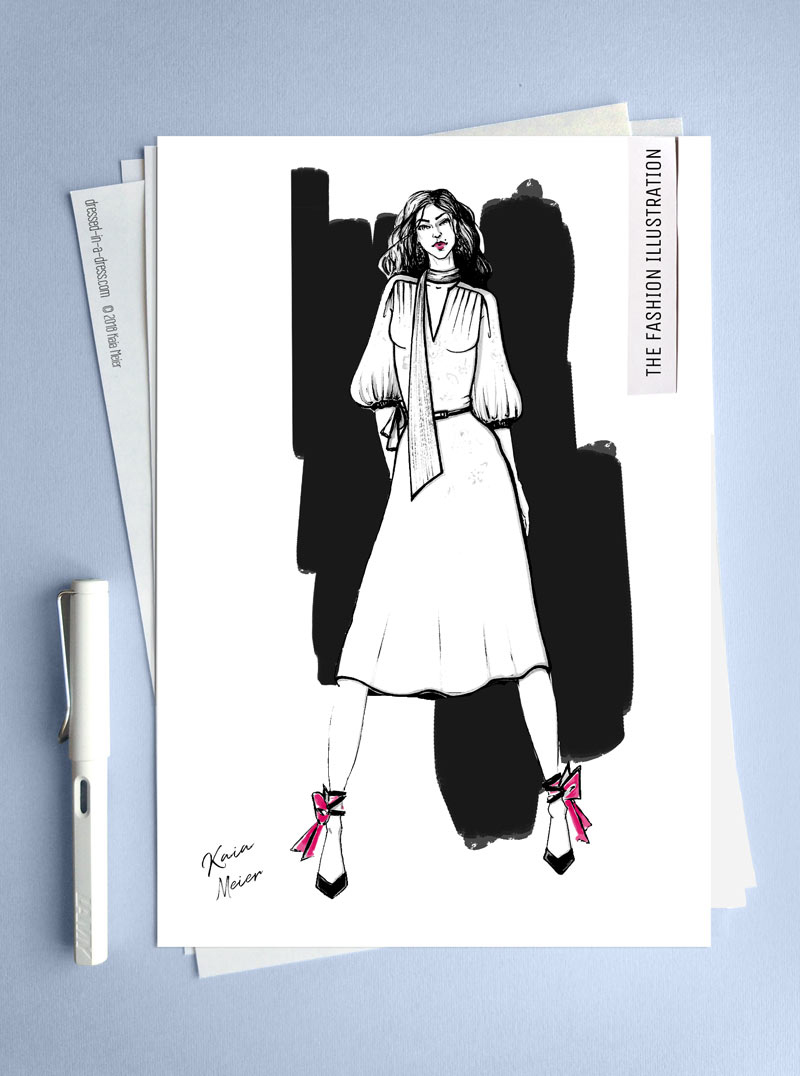
But in real life, there are no figures with such proportions, and, therefore, the outfit looks different on an average girl. The way out of this situation is simple:
Instead of the usual 10-head croquis, you can draw the one with natural proportions that correspond to the customer.
The Technical Flat Drawing
The Technical Flat is a drawing that shows the outfit lying flat on the table. The image follows dimensions and proportions and conveys the design and finish of the outfit in detail.
At the same time in 8 cases out of 10, the image seems suspiciously wide to the clients, but it’s not. Laying on the flat surface the dress will look wider than you see it in the mirror.
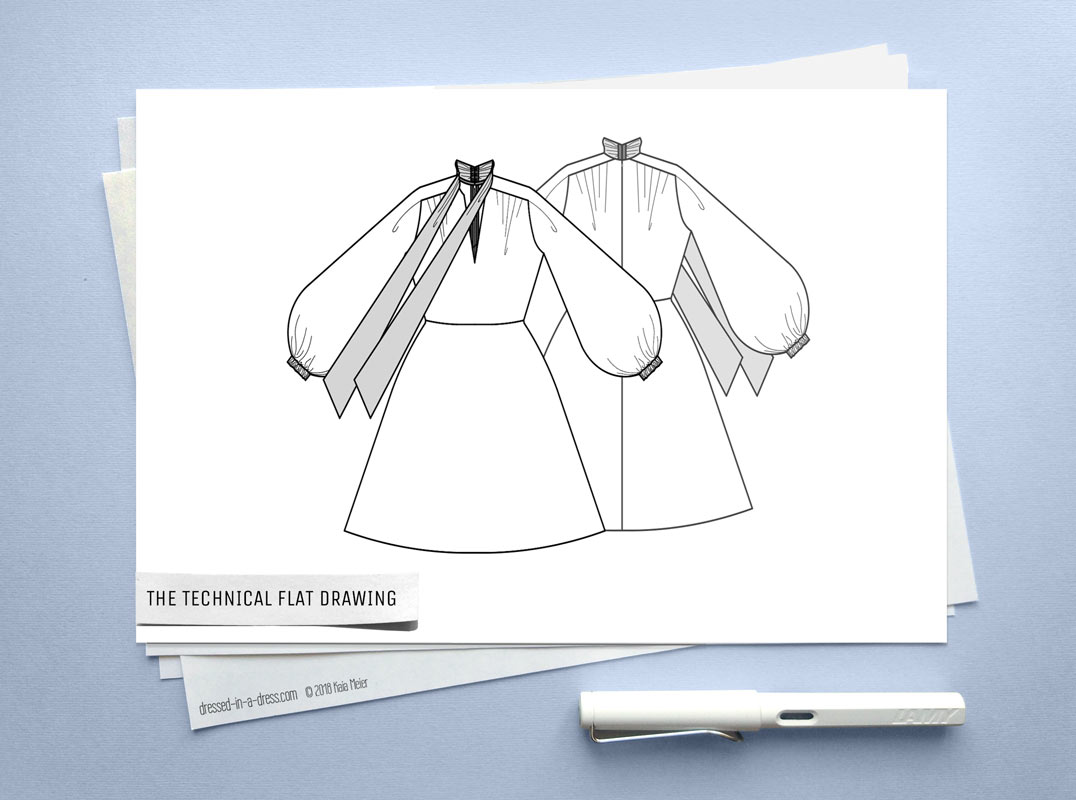
That’s right. People are not flat, but 3-dimensional. In the mirror, the width of the side parts of the outfit is distorted by the perspective.
As building drawings, tech flat drawings are needed for communication between the designer and the manufacturer. These flats are included in sets of drawings and tables that are sent to a factory or an atelier. They indicate the necessary measurements – length, width, height, – construction and details.
Flat drawing is a picture of the finished product. The thicknesses of the lines are important, so shadows and greasy lines are not appropriate here. They confuse the manufacturer. Even not an artist can draw a tech flat, but one should have good drafting skills and patternmaking and apparel construction knowledge.
The Flat Sketch
In my work, I often use sketches and flat sketches. These ones are cousins to tech flat drawings.
Unlike the older brother, the Flat Sketch allows fashion proportions, shadows, prints and any other visual effect.
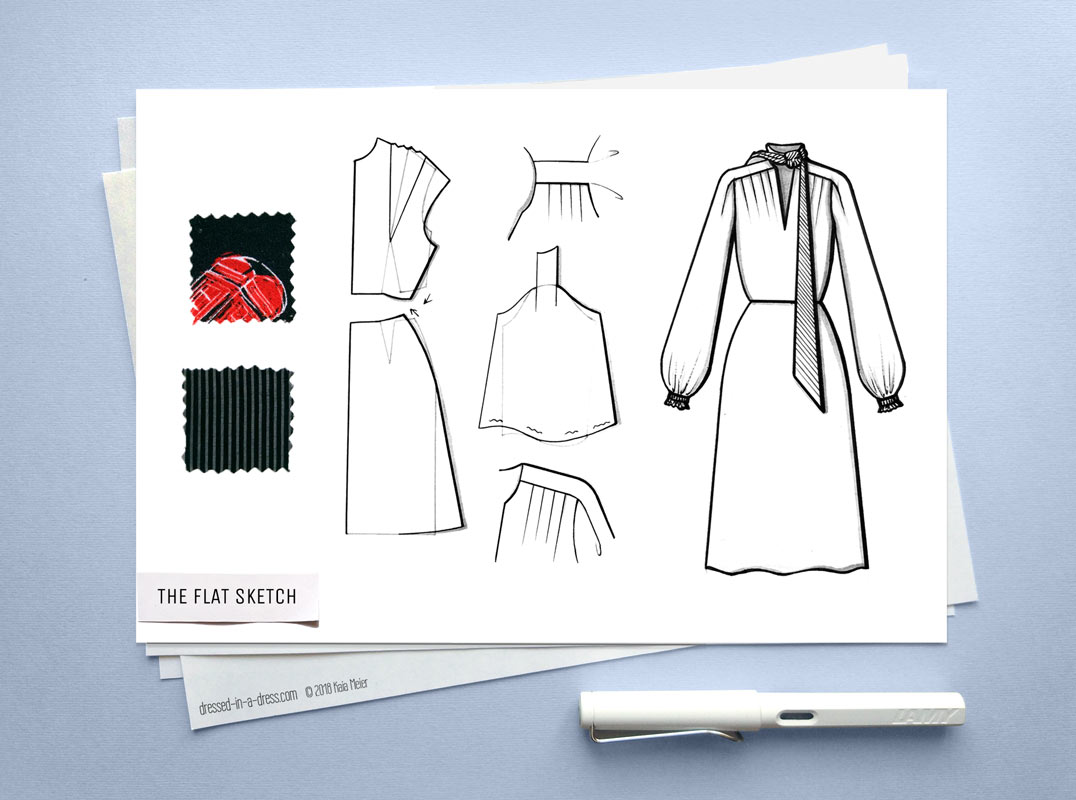
This is what you need if you do not want to draw a figure, but still need a nice image. For the performance, anything, from paint and markers to collage technique, is suitable. Flat sketches are not as boring as tech drawings, but they are not suitable for communication in the factory.
The train called “idea – realization” does not necessarily stop at every station. The choice depends on the idea itself, its complexity, performer’s experience and desire. At times, a fashion sketch is enough, and sometimes a series of sketches will do. It’s not about the amount or reporting, but the fact that sometimes inspiration is hiding between pages of an old album.
xoxo,
Kaia
